(!)NOTE : Windows 7 users won’t be able to use some latest features of eCatalog/WOS since Microsoft is ending support for Windows 7 on 14 Jan, 2020. Please upgrade your system for uninterrupted services.
- Notice of End of Sales for Economy Series Pneumatic Equipment Category. More information.
Cable Carriers
Search by specifying the lower class category
Brand |
|
|---|---|
| CAD |
|
| Days to Ship |
|
2 items
- Sort By
-
Recommended
You can add up to 6 items per a category to the compare list.
 MiSUMi Economy
MiSUMi EconomyCable Carriers Flap Open-Close
MiSUMi EconomyMISUMI
New at MISUMI? Get 20% Discount on your First Purchase. Click to Register Now
This is an economy item, The price is cheaper than the MISUMI standard product.- Volume Discount
Inner Height H1(mm) Inner Width W1(mm) Bending Radius R(mm) Properties Cover Type Type Pitch P(mm) Number of Divided Sections inside Carrier Cable Insertion Type Max. Cable O.D. Dp(Ø) Cable Insertion Surface Operating Speed(m/s) 10 ~ 32 10 ~ 80 Joints in one set - - - - - - - Not Provided - From: ₹ 1,604.00 Days to Ship: 8 Day(s) or more  8 Day(s) or more
8 Day(s) or more
-
Economy series
You can add up to 6 items per a category to the compare list.
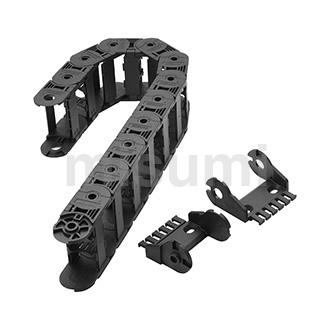 MiSUMi Economy
MiSUMi EconomyCable Carriers Medium Load, Inner Height 25mm, Separator (Separator Attachable)
MiSUMi EconomyMISUMI
New at MISUMI? Get 20% Discount on your First Purchase. Click to Register Now
This is an economy item, The price is cheaper than the MISUMI standard product.- Volume Discount
Inner Height H1(mm) Inner Width W1(mm) Bending Radius R(mm) Properties Cover Type Type Pitch P(mm) Number of Divided Sections inside Carrier Cable Insertion Type Max. Cable O.D. Dp(Ø) Cable Insertion Surface Operating Speed(m/s) 25 25 ~ 125 Joints in one set - - - - - - - Not Provided - From: ₹ 1,002.62 Days to Ship: 8 Day(s) or more  8 Day(s) or more
8 Day(s) or more
| Brand |
|---|
| Product Series |
| CAD |
| From |
| Days to Ship |
| Specifications |
| Inner Height H1(mm) |
| Inner Width W1(mm) |
| Bending Radius R(mm) |
| Properties |
| Cover Type |
| Type |
| Pitch P(mm) |
| Number of Divided Sections inside Carrier |
| Cable Insertion Type |
| Max. Cable O.D. Dp(Ø) |
| Cable Insertion Surface |
| Operating Speed(m/s) |
You can add up to 6 items per a category to the compare list. | You can add up to 6 items per a category to the compare list. | |
| Brand | MISUMI | MISUMI |
| Product Series | Cable Carriers Medium Load, Inner Height 25mm, Separator (Separator Attachable) | |
| CAD |
|
|
| From | ₹ 1,604.00 | ₹ 1,002.62 |
| Days to Ship | 8 Day(s) or more | 8 Day(s) or more |
| Specifications | ||
| Inner Height H1(mm) | 10 ~ 32 | 25 |
| Inner Width W1(mm) | 10 ~ 80 | 25 ~ 125 |
| Bending Radius R(mm) | Joints in one set | Joints in one set |
| Properties | - | - |
| Cover Type | - | - |
| Type | - | - |
| Pitch P(mm) | - | - |
| Number of Divided Sections inside Carrier | - | - |
| Cable Insertion Type | - | - |
| Max. Cable O.D. Dp(Ø) | - | - |
| Cable Insertion Surface | Not Provided | Not Provided |
| Operating Speed(m/s) | - | - |
Loading...
Configure
Specification/Dimensions
-
Inner Height H1(mm)
-
Inner Width W1(mm)
-
Bending Radius R(mm)
-
Properties
- Standard
- Low Particle Generation
- Low Noise
- Low Friction
- Low Vibration
- High Endurance
-
Cover Type
-
Type
-
Pitch P(mm)
-
Number of Divided Sections inside Carrier
-
Cable Insertion Type
-
Max. Cable O.D. Dp(Ø)
-
Cable Insertion Surface
-
Operating Speed(m/s)
Related Categories to Cable Carriers
-
- Linear Shafts
- Shaft Supports
- Shaft Collars
- Linear Bushings
- Ball Guides
- Spline Shaft
- Oil Free Bushings, Washers
- Oil Free Plates, Guide Rails
- Linear Guides
- Cable Carriers
- Ball Screw
- Support Units
- Lead Screws, Slide Screws
- Cross Roller
- Slide Packs, V Guides, Linear Rails
- Actuators
- Other Linear Motion Related Components
- Bellows
FAQ Cable Carriers
- Question: What are the advantages of using a cable carrier?
- Answer: 1. Cable Organization: Cable carriers help manage and organize cables, preventing tangling, twisting, and damage. Moreover, they also enhance workplace safety.
2. Improved Reliability: By preventing cable damage and wear, cable carriers increase the reliability and uptime of machinery and equipment.
3. Easy Maintenance: Cable carriers simplify maintenance tasks by providing easy access to cables and hoses.
4. Noise Reduction: The enclosed design dampens vibrations and reduces noise levels in a working environment.
5. Customizability: Cable carriers come in various sizes, materials, and configurations, allowing for customization based on specific application requirements of the machine - Question: How do you select the right size and type of cable carrier?
- Answer: 1. Determine cable and hose requirements: For example, how many cables are in the systems, what diameter, bending radius and types of cables and hoses
2. Check the Inner dimensions of the cable: To select the internal application area of the cable carrier We have to consider taking into account the size of the cable. Including having to allow for the distance between the cables as well
3. Consider Load Capacity: Determine the maximum weight of the cables and hoses, including any additional loads such as connectors or fittings.
4. Environmental Factors: Evaluate the operating environment for the cable carrier, such as moisture, clean room and so on. Choose a cable carrier with appropriate material and protection features to withstand these conditions.
5. Evaluate Motion Requirements: Determine the expected range of motion and dynamic behavior of the cables and hoses. Consider factors such as linear or multi-axis movement, speed and acceleration.
6. Mounting Options: Consider the available mounting methods, such as horizontal or vertical mounting, fixed or moving mounts - Question: What are some of the most important factors to consider when designing a cable carrier or drag chain system for electrical conduit protection?
- Answer: 1. Cable and Conduit Size: Ensure that the selected cable carrier has sufficient inner dimensions to accommodate the size of the electrical conduits along with any additional space required for cable movement.
2. Load Capacity: Choose a cable carrier that can handle the anticipated load without sagging or causing excessive strain.
3. Flexibility and Range of Motion: Consider factors such as linear or multi-axis movement, bending radius, and the need for torsional or lateral flexibility.
4. Environmental Conditions: Choose a cable carrier made from materials that can withstand these conditions for example high temperatures , moisture and provide adequate protection.
5. Mounting and Installation: Ensure that it is compatible with your application. Consider ease of installation, accessibility for maintenance
6. Safety and Codes Compliance: Ensure that the cable carrier system complies with relevant safety standards such as fire resistance, electrical insulation etc.
7. Maintenance: Select a cable carrier that allows for easy access and maintenance of cables moreover consider for replacements in the future. - Question: What are the different materials used to make cable carrier?
- Answer: 1. Plastic/Polymers: Cable carriers are commonly manufactured using engineering plastics such as polyamide (nylon), polypropylene, or polyethylene. These materials offer excellent resistance to chemicals, impact, and wear.
2. Steel: Steel cable carriers provide high strength and rigidity. They are often used in heavy-duty applications where there are higher loads, extreme temperatures, or exposure to harsh environments.
3. Aluminum: Aluminum cable carriers offer a balance between strength and weight.. Aluminum is corrosion-resistant and often used in applications that require reduced weight, such as robotics and automation systems.
4. Stainless Steel: Stainless steel cable carriers are highly resistant to corrosion, making them suitable for applications in harsh environments, such as marine or chemical industries. They offer excellent durability, strength, and protection against moisture, chemicals, and temperature extremes.




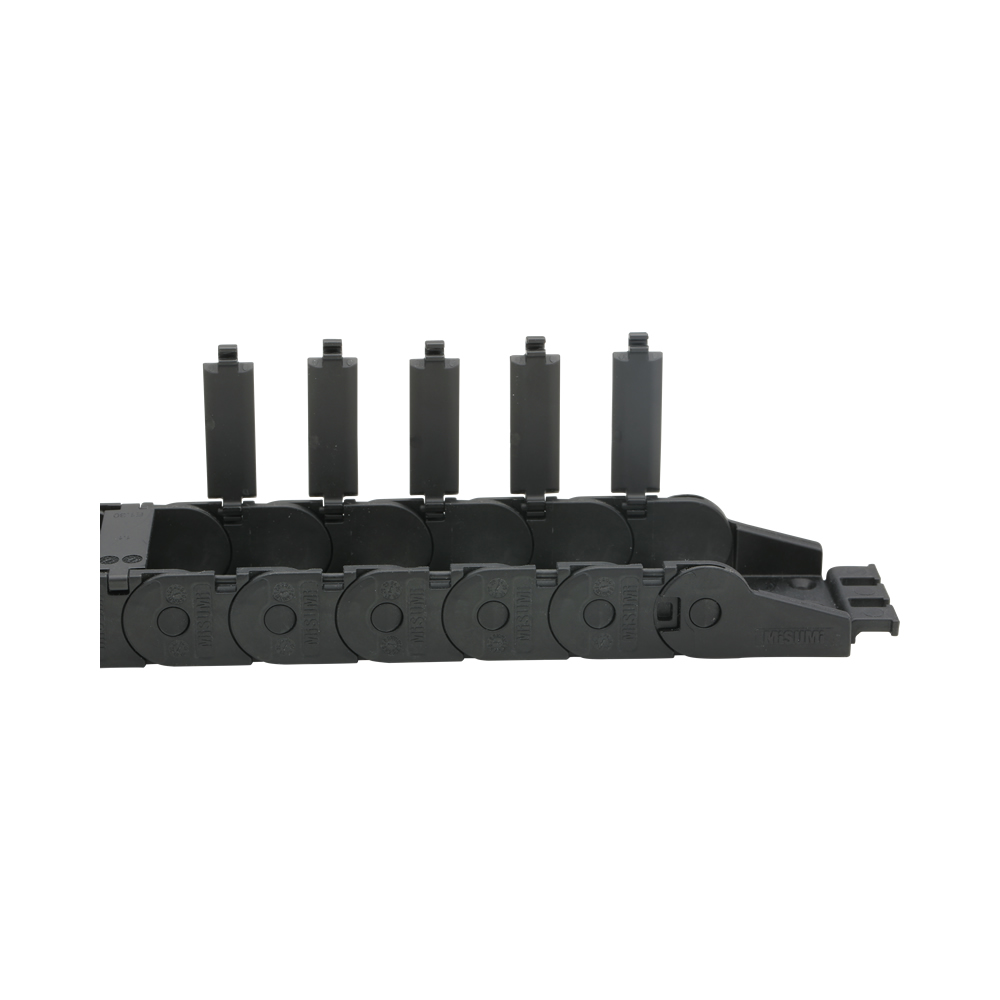
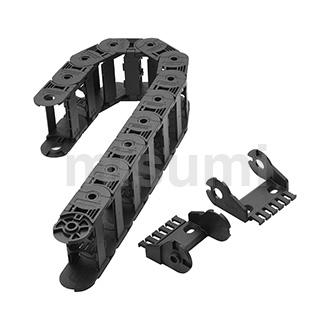
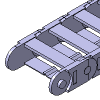
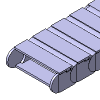

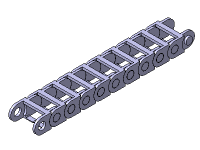



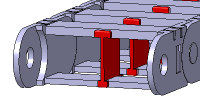
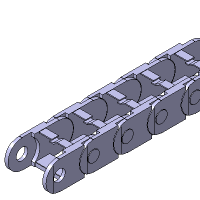
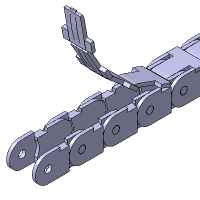

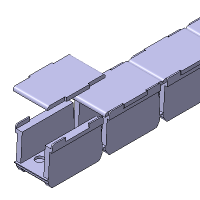
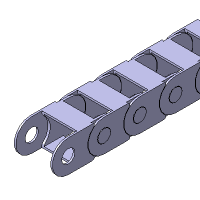



How can we improve?
How can we improve?
Thank you for your time.
Your feedback is essential for our continuous improvement
Privacy Policy
Thank you for your cooperation.
Thank you for your time.
Your feedback is essential for our continuous improvement
Please use the inquiry form.
Privacy Policy